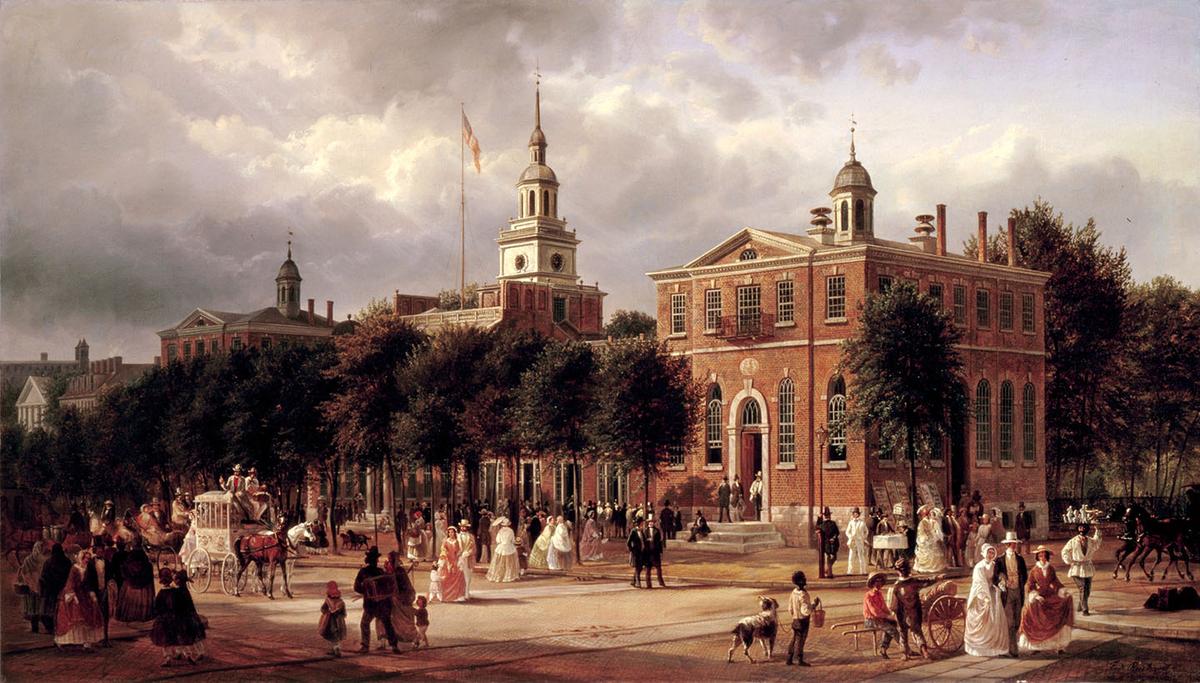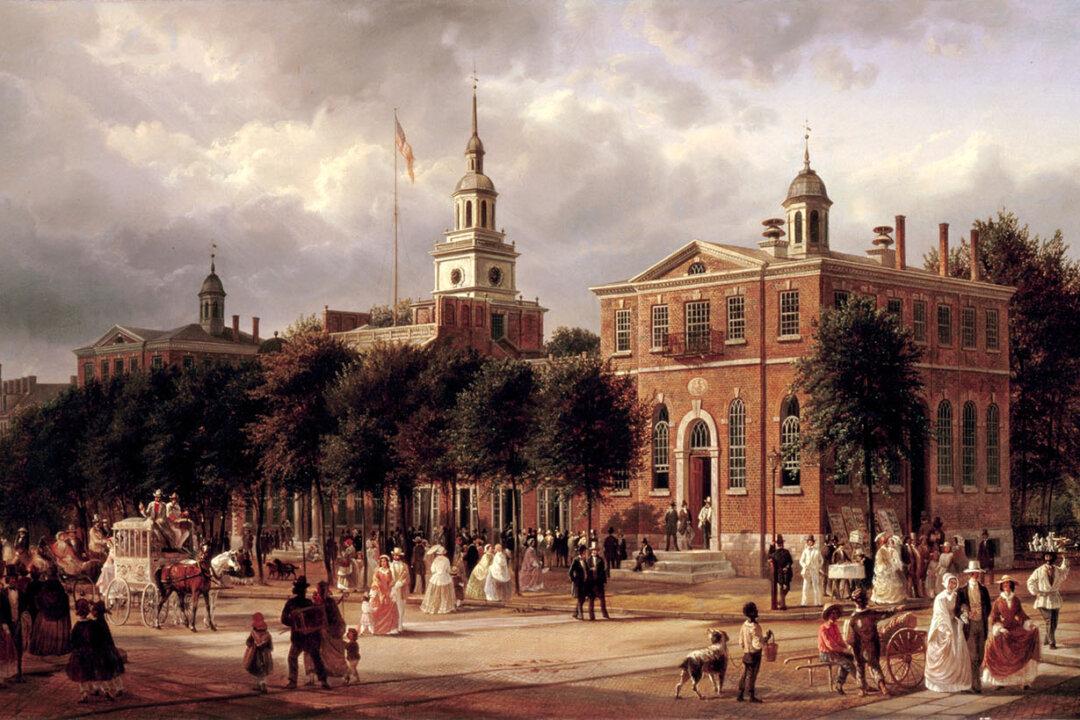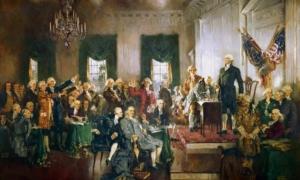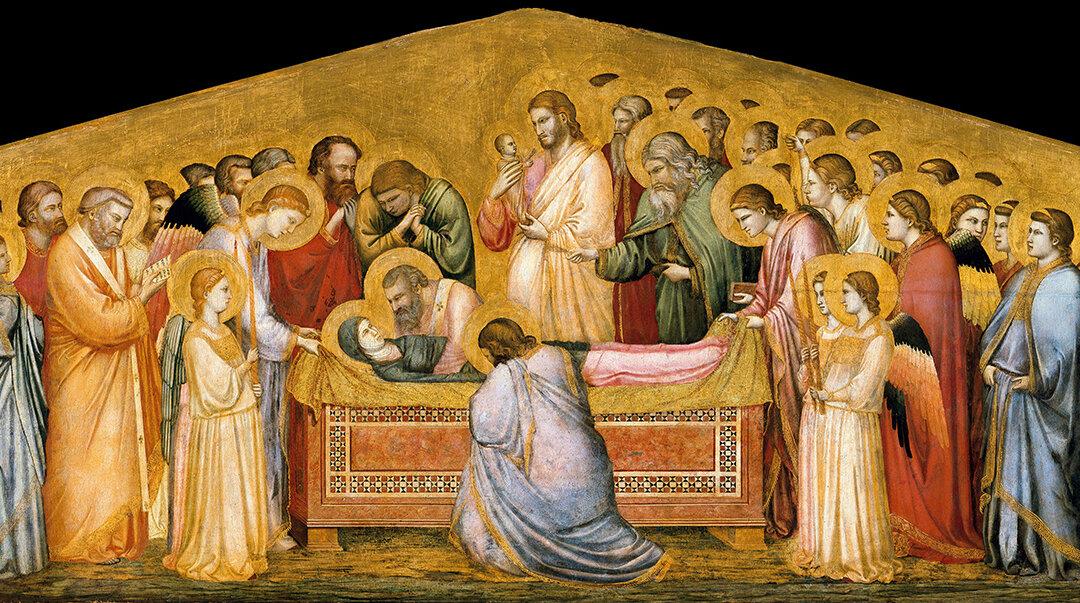Today, it’s hard to imagine a visit to Philadelphia without a stop at Independence Hall. Constructed from 1732 to 1753 by Edmund Woolley and Andrew Hamilton, the fine Georgian building became the birthplace of America’s independence. Both the Declaration of Independence and the U.S. Constitution were debated and ratified in the historic Pennsylvania State House.
With its brick façade, bell tower, and steeple, the iconic tower not only graces our currency, it has inspired replicas across the country. The 20th-century American architect Jens Fredrick Larson popularized the Colonial Revival architectural in his college designs found throughout America.
The Growing City of Philadelphia

After the U.S. Congress moved their meeting hall into the newly built Philadelphia County Courthouse (between 1787 and 1789) and Pennsylvania’s state government moved to Lancaster (from 1799 to 1812) and then Harrisburg (1812), Independence Hall became a surplus building. The state planned to sell the old hall and surrounding grounds to turn the land into subdivided building lots. It was prime real estate in the growing city of Philadelphia.
The state reasoned that Independence Hall’s architectural salvage, along with the sale of building lots, would provide resources to build a grand new statehouse in Lancaster. However, Philadelphia civic leaders thought otherwise. They cited a 1735 provision that specifically prohibited the open space around the statehouse to never “be converted into or made use of for erecting any sort of building thereupon, but that the said ground shall be inclosed [sic], and remain a publick open green and walk for ever.” The City of Philadelphia purchased the block occupied by the old statehouse (which we now know as Independence Hall) for city offices. Negotiations began in 1816 and dragged on until 1818.
In the interim, the building became artist Charles Wilson Peale’s gallery from 1802 to 1826. Peale turned it into his Philadelphia Museum of Natural History and displayed portraits of famous Americans on the second floor.

The Marquis de Lafayette’s “Grand Tour”

The Marquis de Lafayette visited America in 1825. Upon President James Madison’s invitation, Lafayette, George Washington’s friend and ally who commanded armies during the Revolutionary War, was celebrated in each of the states. Towns vied with each other to show Lafayette their honor, erecting temporary triumphal arches and holding grand celebrations.
In Philadelphia, plans were made for a great ceremony in the old statehouse’s assembly room. When Lafayette noticed the old building and its historic room were in a sad state of disrepair, proposals were spurred to restore the building to its former glory in honor of the republic’s birthplace.
It was a daunting task. When Lafayette returned to France in 1825, restoration of the building had scarcely begun. In 1828, William Strickland was hired to draw up plans to rebuild the original steeple. In 1831 the effort expanded to ‘restore the Hall of Independence to its ancient form.’ The building was used to entertain dignitaries and continued to be used to exhibit paintings.

Further impetus to restore Independence Hall came from an unusual prompting by novelist George Lippard, who wrote of its destruction in a dystopian novel. Lippard’s “The Quaker City”—America’s best selling novel before “Uncle Tom’s Cabin”—illustrated the scenario where the state sought to turn the historic hall into building lots. For many it caused an appropriate shudder.

In 1852, the city decided to celebrate every July 4 at the old state house—now officially designated Independence Hall. As 1876 approached, the Centennial Committee refurnished the hall with what was thought to be original furniture. Revolutionary war artifacts were displayed as well. However, much restoration still needed to be completed. In 1898, the Mills wings were removed and replicas of the original wings were built to replace them.

The Liberty Bell

In the mid-18th century, the ringing bell called lawmakers to the assembly, but following Lafayette’s visit, it became something more. After the English writer James Silk Buckingham visited Philadelphia in 1840, he wrote: “This bell [the Liberty Bell] though no longer used for general purposes, still occupied the place in which it was originally hung, and, like the great bell of St. Paul’s in London, used on special occasions such as the anniversary of the Declaration of Independence and visits of distinguished visitors such as Lafayette ... it will no doubt be preserved as a national treasure.”
The bell’s famous crack was originally not as visible. In an attempt to retain the tone of the bell, a technique known as stop-drilling was employed, resulting in the wider crack we know today. It was not successful, but in the end, the bell’s unique appearance resonated with the message of liberty—and the bell took its place in the iconography of the nation.
As America approached its 200th birthday, further restoration and preservation projects were carried out at Independence Hall. Now a UNESCO World Heritage Site, Independence Hall is a symbol of liberty throughout the world. On Oct. 26, 1918, Czech President Tomas Garrigue Masaryk mounted the steps of Independence Hall to announce his country’s newly won independence.
In America, suffragettes and civil rights advocates found inspiration at the old state house. The bell’s inscription, cast in 1752 at the direction of the Pennsylvania Assembly, is from from Leviticus 25:10, and still resounds today; “Proclaim LIBERTY Throughout all the Land unto all the Inhabitants Thereof.”








